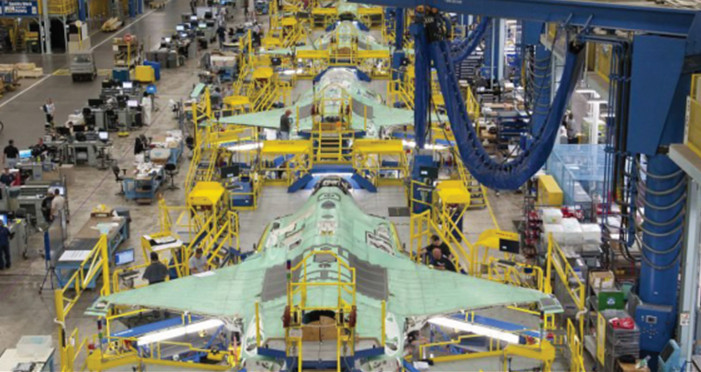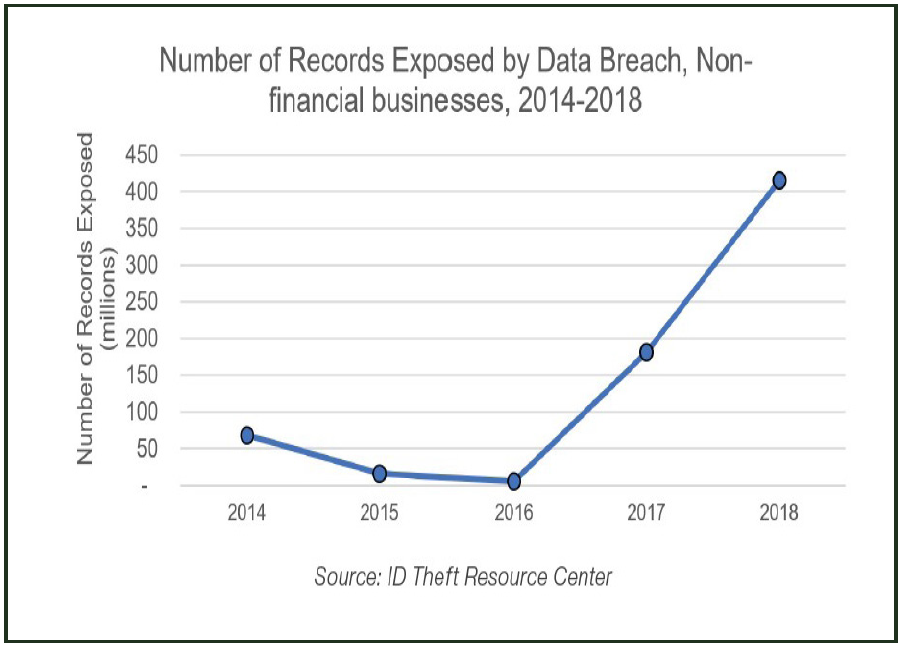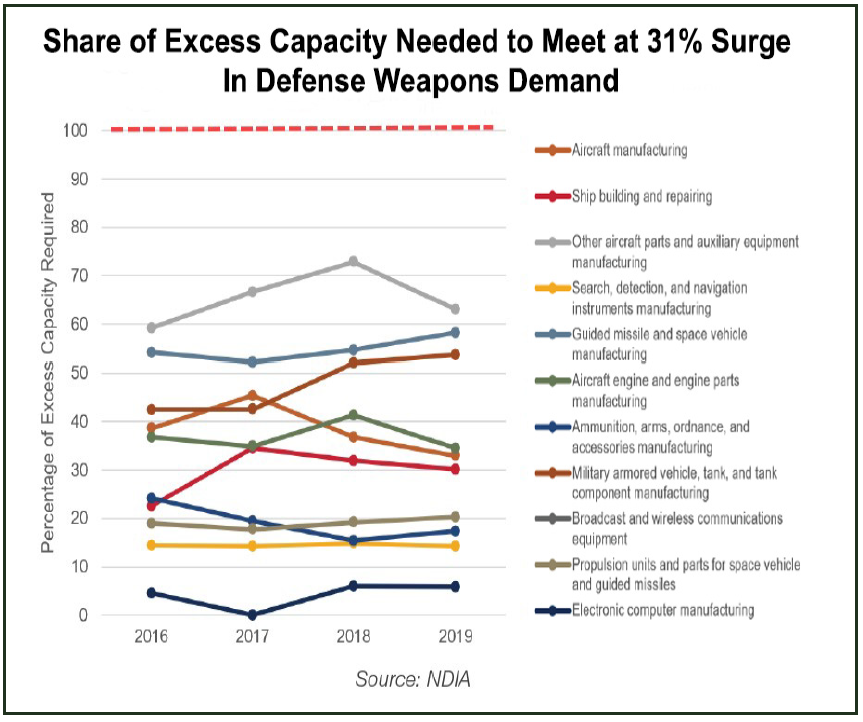




 |
 |
 |
|||
 |
 |
 |
 |
 | |
 |
 |
 | |


| 글로벌 트렌드 | 내서재담기 |


  |
 |  |
오바마 집권 시기, R&D로 준비된 최첨단 군수물자들이 트럼프 행정부의 적극적인 군수물자 조달 명령에 따라 새롭게 조정되고 배치됨에 따라 미국의 방위신업 기반이 재활성화되고 있다. 이라크 전쟁 이후, 미국의 방위산업 수요와 공급에는 불균형이 발생하였으나, 중국과 러시아에 대한 미국과 그 동맹국들의 대응에 따른 변화가 발생한 것이다. 어떤 일이 일어나고 있는가?

20세기와 마찬가지로, 냉전이 ‘뜨거운 전쟁’으로 변하지 않게 하는 최선의 방법은 무기의 질적 양적 측면에서 한 쪽이 압도적인 우위를 유지하는 것이다. 히틀러는 1941년에 소련을 침공했는데, 소련의 전쟁 군수물자 생산력이 독일을 넘어서기 전의 짧은 시간적 기회를 이용한 것이었다. 같은 해 일본이 미국의 진주만을 공격했는데, 미국이 태평양 함대 전력을 보다 극대화하면 공격 능력 면에서 일본이 이를 영구적으로 극복할 수 없다는 사실을 깨달았기 때문이다.
실질적인 통계는 현재 중국과 러시아가 미국과 그 동맹국들보다 군사력에 있어 우위를 차지하고 있지는 않음을 보여준다. 미사일부터 항공기, 군함, 인공위성, 자원 및 수송 지원에 이르기까지 중국과 러시아, 이란은 미국, 일본, 영국과 아직까지는 경쟁할 수 없다.

결과적으로, 유럽(러시아) 혹은 아시아(중국)에서의 군사적 모험주의는 미국과 그 동맹국들이 그러한 공격적 모험에 대한 경제적, 군사적 대가를 그들이 엄두도 못 낼 만큼 크게 유지하는 한 어느 정도 미연에 방지되고 있다. 러시아와 중국이 미국과 군사적으로 등등한 수준에 결코 다다르지 못하고 있는 사실도 이러한 군사적 모험에 대한 하나의 방지 기능을 수행하고 있다.
좀 더 엄밀히 말하자면, 현재의 상황은 장기적인 경제적 손실 전쟁을 예고하고 있다. 이 전쟁에서 유리한 쪽은 분명히 더 크고 강력한 네트워크와 동맹을 구축한 곳이다. 그리고 가장 큰 위험은 베트남 전쟁과 아프가니스탄 전쟁과 같이 대리 전쟁의 형태로 발생할 가능성이 높다. 이 전쟁에서 승리하는 데 필요한 우위를 유지하려면 ‘변화하는 수요에 대응할 준비를 갖춘 고도로 경쟁력있는 방위산업’이 필요하다.
군수물자 조달이 이라크 전쟁 중 절정에 이르렀던 이후, 미국의 방위 수요는 극적으로 변했다. 2001년 9월 11일 테러 공격 이후 미군은 국가가 아닌 ‘분산된 형태의 비국가 테러리스트들’과 ‘상대적으로 단순한 테러지원국들’에 대응하는 비대칭 전쟁에 집중했다. 다른 초강대국들이 관여하는 것도, 은밀한 무기 거래나 군사기술 고문의 역할에 그칠 뿐이었기 때문이다.
오바마 행정부 기간, 미 의회와 국방부(DOD, Department of Defense)는 미국이 최첨단 군사 기술을 유지해야한다는 점을 인식하고 있었지만, 미래에 닥칠 위협의 성향이 너무 불확실한 시기에 군수물자 조달 프로그램을 운용하는 것은 꺼렸다. 그 결과, 군수물자 조달이 줄어들었다. 다만 R&D는 여전이 그 강도를 유지했다. 이러한 이유로, 현재 미군은 배치 인력 및 물자의 부족으로 어려움을 겪고 있지만, 출시할 준비가 된 새로운 최첨단 솔루션으로 가득 찬 파이프라인을 갖추고 있다.

매년 미 방위산업협회(National Defense Industrial Association, NDIA)는 미국과 그 동맹국들이 예측되는 도전 상황에 대해 대처할 수 있도록 미 방위산업 기반(America’s Defense Industrial Base)의 유효성에 대한 일종의 성적표를 발행한다. 이 성적표는 경쟁력, 생산 투입, 수요, 혁신, 산업 보안, 공급망 탄력성, 생산 능력, 정치 및 규제 제약의 8개 범주, 40개의 매트릭스로 구성되어 있다.
.png)
결과적으로 2020년 기준, 미 방위산업 기반은 수요와 생산 능력에서 급증을 보여주고 있다. 트럼프 행정부가 오바마 대통령 시기에 개발된 신무기를 배치하는 동시에 무기 비축량을 보충하고 늘렸기 때문이다. 한편으로 ‘공급망 탄력성’, ‘산업 보안’, ‘정치 및 규제 제약’은 악화되었다.
공급망 탄력성과 관련된 문제가 특히 더 두드러지는 데 여기에는 단일 공급원, 취약한 공급업체, 해외 의존성 및 다른 기타 위기에 의해 악화된 것이 모두 포함된 것이다. 그러나 다행히도 이러한 문제는 적극적으로 해결되고 있다. 2020년 1월 이후, 국방부 종합 보고서에서 확인된 전략적 방위산업 기반의 위기를 해결하는 데 초점을 맞춘 14개의 대통령 결정문이 내려졌다. 이러한 결정문은 소노부이(sonobuoy, 음향 탐지기를 비치한 부이로 잠수함이나 어군 탐지, 해저의 지각 구조의 탐사에 쓴다), 리튬 해수 배터리, 미사일 및 탄약용 중요 화학 물질과 같은 재료들이 해당 산업의 위험을 완화하는 데 도움이 되는 특별한 프로젝트 자금을 필요로 함을 의미한다. 현재 이러한 문제를 해결함으로써, 방위산업은 국가안보 문제가 발생할 때 더욱 탄력적이 될 것이다.
.png)
정치적, 규제적 측면의 악화도 문제이지만 그렇게 놀라운 일은 아니다. 방위 준비태세는 새로운 위협이 ‘전선과 중심’에 있을 때는 의회의 관심을 많이 받는 영역이지만 다른 더 긴급한 상황이 발생했을 때는 간과되기 쉬운 영역이다. 작년 기준, 갤럽이 조사한 미국인의 77%는 미국이 여전히 ‘방어에 너무 적은 지출’을 하고 있다고 답했다. 이를 기반으로 미국인들이 코로나19와 지금 미국이 직면하고 있는 많은 다른 중요 문제들이 중국으로부터 발현되었고, 중국이 미국 내 정치, 경제, 군사 지형에 (러시아와 함께) 적극적으로 개입하고자 함을 인지함에 따라, 미 의회와 행정부는 다단계 방위 전략에 다시 집중을 할 수 있는 여건이 조성될 것이다.
반면, 악화된 범주 중 가장 긴급한 사항이 바로 산업 보안이다. 2019년 산업 보안은 63점으로 8개 범주 중 가장 낮은 점수를 기록했다. 더욱이 산업 보안은 방위와의 관련성에서 더 밀접해지고 있는데, 최근 몇 년 동안 국가 및 비국가 행위자들의 대규모 데이터 침해로 방위산업 계약업체의 고통이 더 증대되었기 때문이다. 미 주요 방위산업 계약자 중 하나인 마이터 코퍼레이션(MITRE Corp.)에 따르면, 2016년∼2018년 사이에 새롭게 발견된 사이버 상의 취약성은 2014년∼2016년 사이에 발견된 것의 거의 두 배에 달했다. 사이버 전쟁에서 러시아와 중국의 높은 역량을 감안할 때 이것은 아마도 미국의 방위산업이 현재 직면한 가장 큰 관심 분야 중 하나일 것이다.

미 방위산업에 대한 현재, 그리고 취약성을 보충하려는 움직임 등을 감안할 때, 우리는 향후 다음과 같은 예측을 내릴 수 있다.
첫째, 21세기 냉전에서 가장 큰 전쟁 중 하나는 사이버 공간에서 벌어질 것이다.
이것은 중국이 분명한 경쟁 우위를 가지고 전쟁을 시작하는 분야이다. 다만 이것은 경쟁 우위가 매우 빠르게 변할 수 있는 현대 전쟁에서 가장 변동이 극심한 영역일 것이다. 미국을 중심으로 OECD 국가들과 기업들이 화웨이 등 중국 제품과 서비스를 점점 더 금지하고 봉쇄하고 있다. 이에 미국과 그 동맹국들이 중국과의 격차를 빠르게 좁힐 것으로 예상된다.
둘째, 미 국방부가 단일 공급원, 취약한 공급업체, 해외 의존성 및 기타 위험을 기업들이 해결하는 데 도움을 주면서, 최근 공급망 탄력성 악화 문제가 해결될 것이다.
비용 중심, 적시(just-in-time) 공급의 시대에 기업들은 튼튼하지 않은 공급망에 지나치게 의존하기 쉽다. 일반적인 시기, 일반적인 산업에서는 이 문제를 종종 용인할 수 있다. 하지만 국가 안보에서는 절대 그럴 수 없다. 2017년까지는 방위 계약업체 공급망의 탄력성을 보장하기 위한 공식적인 메커니즘이 존재하지 않았다. 하지만 지금은 존재한다. 따라서 모든 것이 계획대로 진행된다면 공급업체들이 생산 문제로 납품에 실패하는 상황은 거의 발생하지 않을 것이다.

셋째, 미국의 가장 큰 강점은 혁신이며 이 분야를 계속 선도할 것이다.
‘혁신 파이프라인’, 즉 R&D를 실제로 배치되는 무기 시스템으로 전환하려는 노력에 있어, 현 행정부는 이미 강력한 방위를 위한 R&D 예산을 늘려놓았다. 이에 따른 강점은 미국과 그 동맹국들이 디지털 주류(mainstream)로부터 중국을 차단하는 ‘철의 기술 장막’을 구축하면서 더욱 커질 것이다. 머지않아 전 세계 소비자들은 중국 제품과 ‘(일본, 한국 제품을 포함하는) 서구 제품’ 중 하나를 선택해야 할 것이다. 군사 기술과 민간 기술 간에 시너지 효과 사례는 너무나 많기 때문에 이것은 매우 중요하다. 20세기 냉전 기간 소련은 부유한 서구 소비자 시장과 이를 뒷받침하는 산업에 대한 접근 부족으로 심각한 장애를 겪었다. 지금까지 중국은 세계화에 편집되어 구소련과 같은 그러한 문제를 경험하지 않았지만, 홍콩부터 종교, 지적 재산에 이르는 모든 것에 대한 제재로 인해 첨단 주류 기술을 사고 팔 수 있는 능력에 큰 타격을 입을 것이다. 빠르게 변화하는 이 시장에서 이는 기술 경쟁 능력이 크게 저해된다는 의미이다.
넷째, 미 국방부는 2022년까지 정치적, 규제적 제약으로 인한 방위산업 기반의 악화를 해결할 것이고, 이로 인해 미국의 방위산업 기반은 미중 냉전 기간 동안 직면하게 될 모든 수요 급증을 충족시킬 수 있게 될 것이다.
재래식 전투와 달리 이 전투는 길게 끝도 없이 진행되는 ‘소모 전쟁’이 될 것이다. 일반적으로 정치적, 경제적 무기는 이러한 유형의 전투에서 실제 무기보다 더 중요하다. 미국의 핵무기 갱신과 같은 메가 프로그램은 10년 이상에 걸쳐 수행되고, 많은 자원은 기존 플랫폼을 지속적으로 업그레이드하는 방향으로 사용될 것이다. 정치적, 규제적 제약이 중요한 이유는 예상치 못한 물자 부족으로 인해 가격이 급증하는 사태를 미리 대비할 수 있다는 점이다. 실제로 현 행정부는 정치적, 규제적 제약을 완화하여 지난 10년 동안 고갈된 항공기 및 미사일 부품을 대량으로 구입할 수 있었다. 더불어 대규모 재래식 대결을 감안하여, 탄약 등의 소모품에 대한 수요를 300%까지 수용할 수 있게 되었다.

* *
References List :
1. The National Defense Industrial Association. Wesley Hallman. Vital Signs 2020: The Health and Readiness of the Defense Industrial Base.
https://www.ndia.org/-/media/vital-signs/vital-signs_screen_v3.ashx?la=en
2. Washington Technology. February 5, 2020. Nick Wakeman. Is the defense industrial base in failing health?
https://washingtontechnology.com/blogs/editors-notebook/2020/02/ndia-defense-industrial-base-health.aspx
3. National Defense Magazine.January 31, 2020. Stew Magnuson. Special Report: Defense Industrial Base Vitality Outlook.
https://www.nationaldefensemagazine.org/-/media/sites/magazine/ebook/vitalsigns_ebook_final.ashx?la=en
 |  |
Reinvigorating the National Defense Industrial Base
As in the 20th century, the best way to ensure that a Cold War does not become a “hot one” is by one side maintaining an overwhelming lead in terms of both the quality and quantity of weaponry. Hitler invaded the USSR in 1941 because he realized that Germany enjoyed only a brief window of time before Soviet war production exceeded its own. That same year, Japan attacked Pearl Harbor realizing that delaying would permit the United States to dramatically upgrade its Pacific fleet and give it a permanent advantage in terms of offensive capability.
Today, the Chinese and Russians don’t hold an edge vis a vis the United States and its allies on any meaningful metric. From missiles to aircraft to warships to satellites to natural resources and logistical support, China, Russia and Iran can’t compete with the United States, Japan, and the UK.
As a result, military adventurism in Europe or Asia is preempted as long as America’s alliance makes sure the economic and military price to be paid for such aggression is prohibitive. And that’s only possible we can ensure that Russia and China never approach parity with the U.S.
Based on the 20th Century Cold War, the current portends a long war of economic attrition. This clearly favors the alliance with a larger and stronger network. And the biggest risks will likely arise from the kinds of “proxy wars” that trapped the United States in Vietnam and the USSR in Afghanistan.
Maintaining, the edge needed to win this war requires a highly competitive defense industry ready to respond to changing needs.
Since military procurement peaked during the Iraq war, America’s defense needs have changed dramatically. Following the terrorist attacks of September 11, 2001, U.S. forces concentrated on asymmetric warfare against dispersed non-state actors and their relatively unsophisticated state sponsors. To the extent that other superpowers were involved, it was in the roles of clandestine arms merchant or technical advisor.
During the Obama years, Congress and the DOD recognized that the United States needed to stay on the cutting edge of military technology, but they were unwilling to commit to major procurement programs when the nature of future threats was so uncertain. As a result, procurement shrank, but R&D remained strong. So, while the military suffers from deployment shortfalls, it has a pipeline full of new state-of-the-art solutions ready to be rolled out.
Each year the National Defense Industrial Association (or NDIA) publishes a report card on the adequacy of America’s Defense Industrial Base to do the job of equipping the United States and its allies to meet anticipated challenges. This report card looks at 40 metrics grouped into eight categories: competition, production inputs, demand, innovation, industrial security, supply chain resilience, productive capacity, and political & regulatory constraints.
In a nutshell, America’s Defense Industrial Base has seen a surge in demand and production capacity as the Trump administration has worked to upgrade and replenish the arms stockpile while deploying new weapons, which were in developed during the Obama years. Meanwhile, it has seen a clear deterioration supply chain resilience, industrial security, and political & regulatory constraints.
Problems related to supply chain resilience particularly striking. These include being plagued by single sources of supply, fragile suppliers, foreign dependency, and other such risks. But fortunately, these problems are being aggressively addressed. As of January 2020, fourteen presidential determinations had been issued that focus on addressing strategic industrial base risks identified in a comprehensive DOD report. These determinations have indicated that materials such as sonobuoys, lithium seawater batteries, and critical chemicals for missiles and munitions needed special project funding to help mitigate the risks in those industries. By addressing these problems now, the defense industry will be more resilient when national security challenges arise.
Deterioration on the political and regulatory front is problematic, but not surprising. Defense preparedness is an area that gets a lot of attention from Congress when a new threat is “front and center,” but it’s easy to ignore when there are other more pressing concerns. Notably, as of last year, 77% of Americans polled by Gallup said that we were still “spending too little on defense.” As people realize that COVID19 and myriad other high-profile problems came from China and that China is working proactively (with Russia) to interfere with our political processes, Congress and the Administration will refocus on a multi-tiered defense strategy.
Meanwhile, by far the most alarming of the deteriorating categories are industrial security. In 2019, industrial security scored a 63, the lowest among the eight dimensions tracked. Furthermore, Industrial security has become increasingly relevant because massive data breaches by state and non-state actors have increasingly plagued defense contractors in recent years. According to MITRE Corp., new cyber vulnerabilities identified in the years 2016 to 2018 were almost double those discovered between 2014 and 2016. Given the high Russian and Chinese competence in cyber warfare, this is probably the biggest area of concern facing America’s defense industry.
Given this trend, we offer the following forecasts for your consideration.
First, the great battles of the 21st Century cold war will be fought in cyber-space with the support of human intelligence.
This is the one area in which China begins the war with a clear competitive advantage. However, it is probably the most volatile area of modern warfare, where competitive advantage can shift very quickly. Expect the United States and its allies to close the gap quickly as Chinese products and services are increasingly banned by OECD governments and firms.
Second, the recent deterioration in supply chain resiliency will be resolved as the DoD helps companies address single sources of supply, fragile suppliers, foreign dependency, and other such risks.
In the cost-driven, just-in-time era it is easy for companies to become overly dependent on supply chains that are not sufficiently robust. In normal times and in normal industries that’s often an acceptable risk, but when it comes to national security, it’s not. Until 2017, there was no formal mechanism for ensuring the resilience of defense contractor supply chains; but now there is. If all goes according to plan, we should almost never have a situation where a vendor fails to deliver because of upstream problems.
Third, America’s great strength is innovation and it will continue to lead in this area.
In an effort to translate the pipeline of innovations into deployed weapons systems the current administration has increased America’s already strong defense R&D budget. This advantage will increase as the United States and its allies work to erect “a technological iron curtain” shutting China out of the digital mainstream. Soon, consumers worldwide will be forced to choose between western products (including those from Japan and South Korea) and Chinese products. This is important because there are so many synergies between military and civilian technologies. During the 20th Century Cold War, the Soviets were severely handicapped by a lack of access to affluent Western consumer markets and the industries underpinning them. Until now, China has not had that problem, but sanctions related to everything from Hong Kong to religious minorities, to the intellectual property they will quickly take a toll on their ability to buy and sell mainstream technology. Over time, this will impede China’s ability to compete with western defense technologies, as well.
Fourth, by 2022 the DOD will succeed in reversing the recent deterioration in the National Defense Industrial Base caused by political & regulatory constraints. And,
Fifth, America’s National Defense Industrial Base will be able to meet any demand surge we’re likely to face during the Sino-American Cold War.
Unlike a hot conventional battle, this will be a long, grinding “war of attrition.” Political and economic weapons are typically more important than arms in such a struggle. Arms and other resources are primarily useful for deterring aggression and “tamping down” hotspots. “Mega-programs like the renewal of America’s nuclear arsenal are undertaken over a decade or more, while a great deal of the resources goes into constantly upgrading existing platforms. Occasionally there are surges because of unexpected shortages, but the current administration has already minimized this contingency by making large one-time purchases of aircraft and missile components depleted over the prior decade. And in the event of a major conventional confrontation, the defense industry could readily accommodate a 300% surge in demand for consumables like ammunition and ordinance.
References
1. The National Defense Industrial Association. Wesley Hallman. Vital Signs 2020: The Health and Readiness of the Defense Industrial Base.
https://www.ndia.org/-/media/vital-signs/vital-signs_screen_v3.ashx?la=en
2. Washington Technology. February 5, 2020. Nick Wakeman. Is the defense industrial base in failing health?
https://washingtontechnology.com/blogs/editors-notebook/2020/02/ndia-defense-industrial-base-health.aspx
3. National Defense Magazine.January 31, 2020. Stew Magnuson. Special Report: Defense Industrial Base Vitality Outlook.
https://www.nationaldefensemagazine.org/-/media/sites/magazine/ebook/vitalsigns_ebook_final.ashx?la=en
